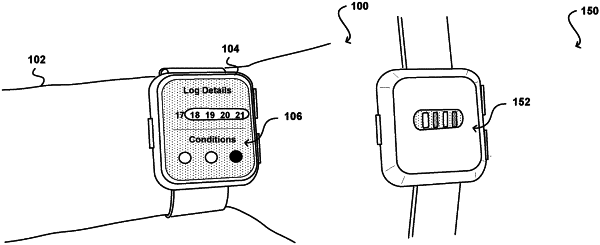| CPC A61B 10/0012 (2013.01) [A61B 5/01 (2013.01); A61B 5/02055 (2013.01); A61B 5/1118 (2013.01); A61B 5/14546 (2013.01); A61B 5/14551 (2013.01); A61B 5/4815 (2013.01); A61B 5/681 (2013.01); A61B 5/742 (2013.01); A61B 5/02405 (2013.01); A61B 5/02433 (2013.01); A61B 2010/0019 (2013.01)] | 20 Claims |

|
1. A system, comprising:
a display device;
a monitoring device including a non-invasive measurement sub-system;
at least one processor; and
memory including instructions that, when executed by the at least one processor, cause the monitoring device to:
obtain historical user information for one or more events related to a menstrual cycle of a user;
generate a prediction for a future event related to the menstrual cycle, the prediction based at least in part on the historical user information as input into a predictive model;
obtain, using the non-invasive measurement sub-system, heart rate-derived data for the user over a period of time;
correlate, through the predictive model, patterns in the heart rate-derived data with events in the menstrual cycle;
provide the heart rate-derived data as additional input to the predictive model;
generate, using the predictive model and the additional input, an updated prediction for the future event related to the menstrual cycle, the predictive model using machine learning to analyze the heart-rate derived data, and the historical user information being used to refine or retrain the predictive model; and
display, on the display device, information associated with the updated prediction for the future event.
|